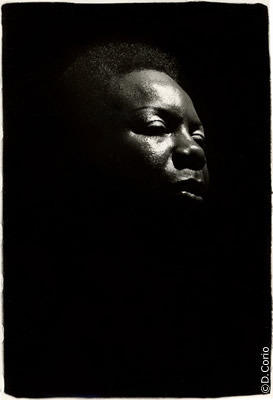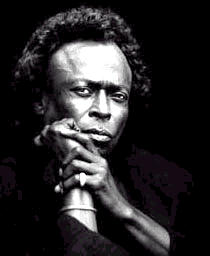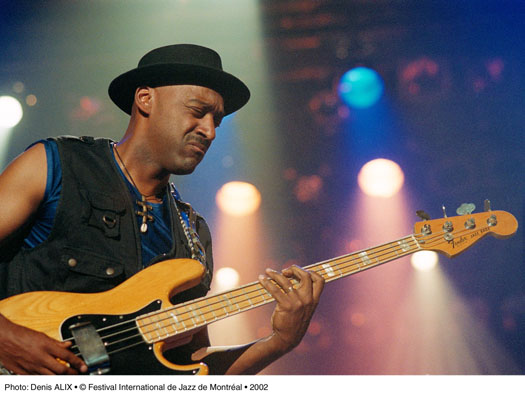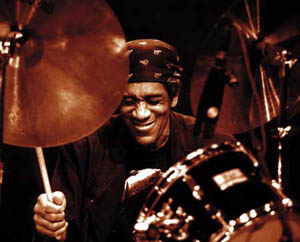MILES DAVIS / “My Man’s Gone Now”
Miles. And Nina. And then some more Miles.
The first Miles is from the famed Porgy & Bess album which features Gil Evans arrangements. Lush. Romantic. Wonderful soundtrack for wonderful Sunday morning one-on-one sessions, sun streaming quietly in the window, the leavings of breakfast and bed strewn on the floor after the physical breakfast in bed got good. Moments you remember as definitions of tenderness.

But “My Man” is a lament. A sad song. And Nina shows you just how sad sad can be. Real sad. But when you get this sad, well, sad takes on a new texture. It be/s and be/comes something to O.D. on, something to take as if it were twenty sleeping pills and you never want to wake up, something you could hang on the wall of any museum and stare at for hours. Nina is mesmerizing in this performance.
And then Miles returns after retiring to reclaim his horn, except now instead of swinging and singing he is dropping down on all fours, covering the funky four corners. I am not a fan of electric Miles, mainly because the bands usually don’t keep up—indeed, one secret of early and mature Miles during his pre-electric days is that his band members could and did play circles around him. But this live set is different from all of the other comeback recordings.
The band is Marcus Miller on Fender bass. Bill Evans on soprano sax. Mike Stern on guitar. Al Foster on drums. Mino Cinelu on percussion. A band that was Miles’ last great jazz band, and yet, a band that was also comfortable locking into grooves. Everybody acquits themselves well on this cut. It’s one of the best solos Evans ever recorded. Mike Stern is all over the place, but with a subtle fire that is never too busy, never detracting from the shape of the music as a whole. Too often during his electric days, when Miles laid out the band sounded like a second-rate rock group. We get none of that here. Instead, Stern shadows Miles, complementing rather than competing or sounding like he’s waiting for his turn to twist the knobs up to ten (or more) and wail as if he’s trying to channel Jimi Hendrix. Cinelu is proficient but the audio quality is not good enough to hear the all the textures of his touch.
This version of the Gershwin song excels because of three elements. Miller’s funky bass. Foster’s deft drumming. And Miles, Miles, Miles blowing his ass off, sometimes as subtle as watercolors on rice paper, sometimes as brash as graffiti on a subway train, all the time beautiful.
A lot of people think it’s easy to play funk bass, the truth is that it’s easy to play ‘at’ or play ‘like’ funk bass, but to really lock in the pocket and at the same time come up with inventive riffs, that is not easy and that is precisely what Miller excels at doing. He is a beast on the bass. Plus, he is a both a serious student of the music and a major producer who knows how to put diverse elements together. Listen closely. What he is doing may sound simple, but it’s a bit more complex than first meets the ear. It is one of the hallmarks of a jazz master: to do the difficult and make it sound effortless. I also like Miller’s sense of dynamics. Never too loud. And, at appropriate moments, whisper soft. 
And then there is Al ‘How Many Hands Does He Have?’ Foster coming up with different rhythms for each soloist. He rolls and thunders on the tom-toms, and then he puts his foot in the bass drum. He swings on the cymbals and keeps time with snare riffs that virtually sing. I know Foster doesn’t have the ‘go-go’ chops of Ricky Weldman (Miles’ last great drummer), but what Foster does have, in spades, is the ability to improvise while laying down a groove. This improvising on a funk rhythm is what marks the difference between programmed drums and what a cat like Foster can do. When you’re stretching out for twenty minutes, as they do on this track, well, it’s just down right exhilarating to hear the drummer creating textures that keep the music not only interesting but also exciting. 
Finally, in terms of his actual playing, this is the best of post-retirement Miles. His tone is good. His chops are up; he’s even hitting high notes with confidence. And you can tell from how much he bobs and weaves in and out of the melodic improvisations, alternating between mute and open-horn that he’s really having a ball, playing full out with no hesitation. This is an electric Miles that most of us who loved early Miles can also dig because the level of his playing on this cut is on a par with anything else he has done. If you get only one electric Miles recording, start here.
—Kalamu ya Salaam
Miles nut vs. Trane freak
Baba, you and anyone else whose been reading BoL for a while know that I’m the Miles nut and you’re the ‘Trane freak. (Which are the two varieties jazz fans seem to come in. Sooner or later, you gotta take your pick: Miles or ‘Trane.) This isn’t to say that I don’t dig ‘Trane and it isn’t to say that you don’t dig Miles, but it is what it is. So anyway, thanks for this track. I’m not a big fan of Miles’ orchestral/Gil Evans work, although I do like the Sketches Of Spain album, so I wasn’t familiar with this track before now. I’m not familiar enough with the melody to really enjoy the Nina version—I’m sure I’ll get there though. I like the electric version a lot. But like I feel when I listen to most funk/jazz fusion, I wish there was more bump on the bottom end. Some of that is just production quality…nothing to do with the musicians.
Anyway, thought I’d mention too how funny it is that we end up talking about Nina Simone every other week. Before we started this project, I never would’ve thought that of all the great singers and players of all the genres of Black music, the artist we’d mention most often would be Nina Simone. Not that Nina isn’t a great artist in her own right—she certainly is—I just never realized how wide-ranging and pervasive her influence was/is. Right now, I’m working on a write-up for The Tamlins’ cover of Randy Newman’s “Baltimore,” and it’s Nina Simone’s reggae-inflected version that provides the bridge between Newman’s folk-rock sound and The Tamlin’s post-Roots skank.
—Mtume ya Salaam
Bump on the bottom!
Whether you go for more bounce got to do with orientation: what element is dominant. I don’t think Miles ever truly got to the funk because even when he was investigating the bottom, his music remained head music. That’s just where the emphasis was, which means, when Miles plays his hand, lyricism trumps beats, whereas with funk, it is the other which way that is up. Like James Brown’s band or P-Funk.
Hey, if you want to take it to another level, and obviously I am insinuating that I do, which is why I bring this up, check this out: P-Funk had the Mothership and EWF had the Pyramid Crystal, and they were blowing at the same time. I even remember a particular evening in New Orleans when they both were appearing on the same night. I don’t know how many folk was up in the Superdome (or at least, that’s where I think/sort-of-remember that it was) watching EWF do their thing, and the reason I don’t remember is because I wasn’t there. Yours truly was on the floor of the Municipal Auditorium getting down on the one!
Today, young people listen to Seventies music and lump it all together, but go back into time and check it out, there was a fierce battle going on. P-Funkers thought that EWF (or “mud and hot air” as they were sometimes sarcastically dubbed) was petit-bourgeois funk, which is to say sort of light on their feet, too much to think about and not enough to swing about. I liked them pretty melodies and all, but when it came to really getting down: we want the funk.
Anyway, your caveat about not enough bottom has to do with your preference for bottom and not anything to do with any deficiency in the music per se, or to reverse what Courtney Pine said about some Russian cats (i.e. they had no intentions of swinging), well, for all his posturing otherwise, Miles really had no intention of playing funk. Why you think he ran to England and put all them white boys in his band—following Jimi—when meanwhile at that time the James Brown funk factory was turning out funk musicians of the highest order? If Miles had really wanted a funk band all he had to do…. And to raise it to another level, George Clinton understood, which is why he got the Horny Horns, drafting cats dead out of the Superbad on-the-one-funk, folks who legitimately had terminal degrees from Funk U., i.e. the James Brown band. Don’t forget to mention that Bootsy himself is a graduate.
I could go on and on about this, but just want to point out the absence of bottom was because son-of-a-dentist, well-educated Miles was not searching for the funky bottom, he was looking for a way to be what he was, which was anything but a ghetto dude locked into the groove.
Or to put it another way: on that night in New Orleans, if you was going for the music, you had to make a choice. And, hey, guess what, it was all good. Ain’t nothing wrong with EWF—just don’t complain cause there ain’t no heavy bottom to bump to ;->) .
—Kalamu ya Salaam
This entry was posted on Sunday, April 2nd, 2006 at 1:13 am and is filed under Cover. You can follow any responses to this entry through the RSS 2.0 feed. You can leave a response, or trackback from your own site.
One Response to “MILES DAVIS / “My Man’s Gone Now””
Leave a Reply
| top |